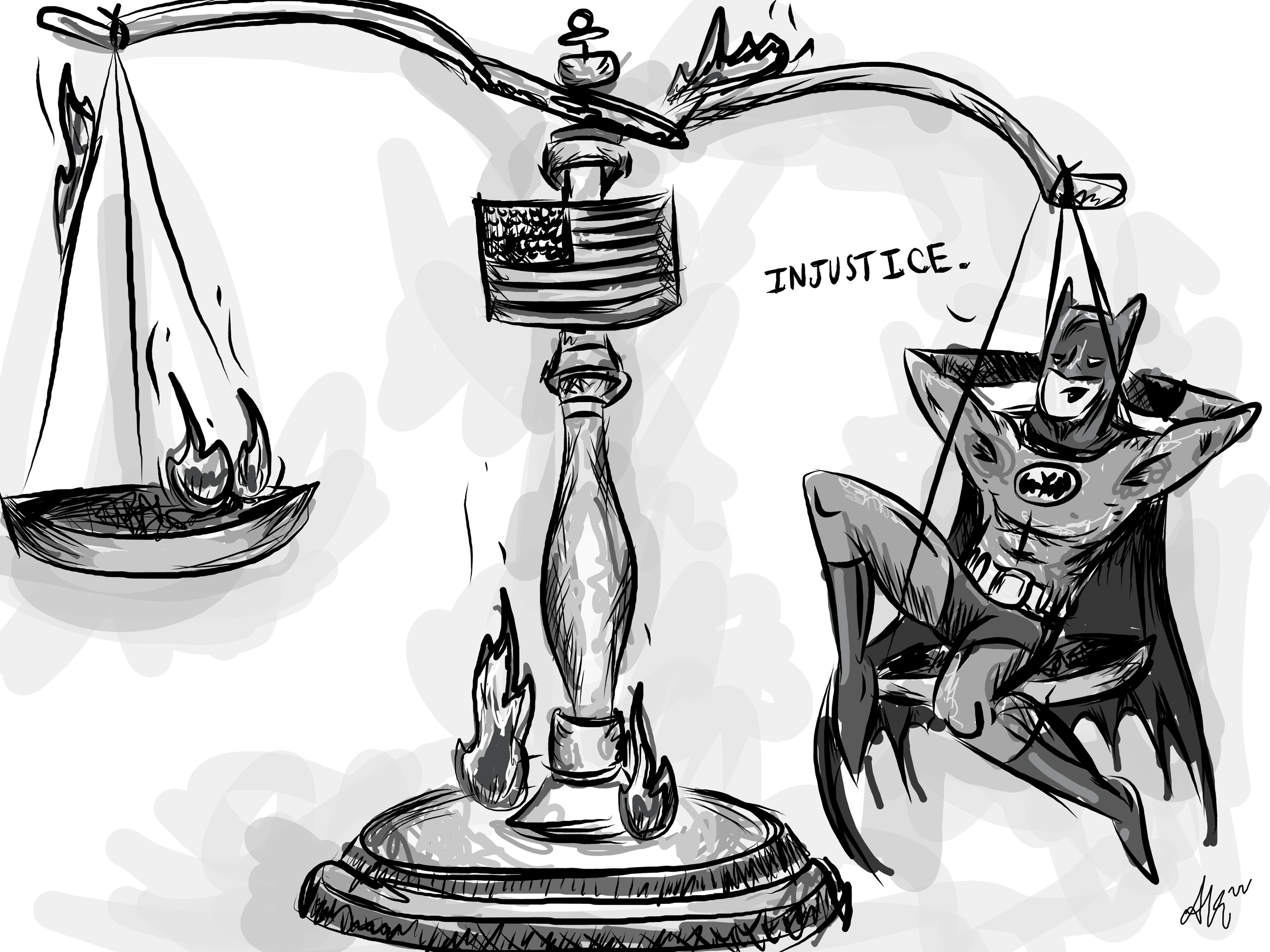Justice for all or just the ones who can afford it?
The criminal justice system: a system that is supposed to, as presumed by its title, protect society and provide justice for everyone, is more often caught doing the opposite. There needs to be change. How can it be called a “justice system” if it does not offer equal opportunities to all groups of people?
The United States has yet to achieve a system that can properly provide justice for all, and despite the fact that the U.S Constitution, the Supreme Law of the Land, states that all citizens are equally protected under the law, there are still people to this day who are discriminated against and treated unjustly by a system that has historically preferential fundamentals and ideologies.
Injustice within the criminal justice system has been a deeply rooted problem in America for decades. From black codes, which imprisoned and limited the freedom of innocent African Americans, to the war on drugs that did more harm than good to already drug-infested communities, the system has undoubtedly made it harder for those that need help to successfully receive it. Because of this, U.S. prisons are far too big and far too full, many common reasons for incarcerating people are barely justifiable.
A large portion of the American criminal justice system was built and established during the Jim Crow era when racial segregation was not only legal but considered “fair”. Because it was established during that time, the systems and institutions within it still produce racially disparate outcomes, despite the intentions of the people who work within them. It cannot be denied that the criminal justice system was built on the ideas of segregation and discrimination, ideas that should have never existed and should not continue to be present in society today.
You may be thinking, well why should I care if there is a mass number of people incarcerated? Doesn’t that mean the criminal justice system achieved what it is supposed to do?
The criminal justice system has certainly delivered justice to many people and incarcerated those who have committed crimes serious enough to deserve such punishment. However, there is still a large portion of people who have turned to the system for the justice it claims to provide, but received the opposite.
Currently, roughly 20,000 people in U.S prisons are considered to be wrongfully convicted, a majority of them being people of color, according to the Innocence Project. For black men ages 20 to 29, about one in four are held under the hands of the criminal justice system.
In a 2020 report of 1.8 million police stops by the eight largest law enforcement agencies in California, the California Racial and Identity Profiling Advisory Board found that blacks were stopped at a rate 2.5 times higher than the per capita rate of whites. The same report also found that black people were much more likely to be stopped for “reasonable suspicion”, not breaking a law, and were three times more likely than any other group to be searched.
Furthermore, black people are 33 percent of those incarcerated for drug crimes, 12 times more likely to be wrongly convicted of such crimes, and 3.5 times more likely to be wrongly convicted of sexual assult.
This perpetual pattern has demonstrated that people of color, more specifically black people, are unfairly disadvantaged in the criminal justice system. However, race is not the only factor -- wealth plays a huge role, as well.
The United States has two distinct criminal justice systems: one for the wealthy and another for the poor. The wealthy have access to a meticulous adversary system that implements constitutional protections for defendants. The experiences of poor and minority defendants, however, differ tremendously due to various factors.
One of the biggest challenges impoverished people deal with is affording a quality lawyer, so many turn to public defendersw. A public lawyer typically spends a miniscule two hours per case investigating evidence, witnesses, and other aspects needed to build adequate reasoning to support the defendant. Because so many people utilize public defenders, they often have a huge caseload, so the time and effort they can exert into the hundreds of cases is increasingly less than that of a private, higher-costing lawyer.
A private lawyer has more availability and staff to help if they are unable to do it themselves at any given time. Also, they have a much smaller caseload and more defense possibilities, meaning they have access to expert witnesses or private laboratories, which can make a tremendous difference in a trial.
So how can the system be reformed? The first tool to be utilized is education. Before we assume, we must learn. Before we judge, we must understand. Modern day society tends to filter out the imperfections of complex, successful systems, like the criminal justice system. In order to solve a problem, in this case the inequity of the system, the problem needs to be acknowledged. Acknowledging, understanding, and accepting that there are flaws will only help create ways to shape an inclusive and reliable system.
One method to help reform the system is to promote community safety through alternatives to incarceration. By investing in communities as opposed to incarceration, high-crime rate areas will be given the chance to access education, materials, and people that will help them improve their lives and become successful.
Another remedy to these issues is creating quality defense. By providing equal quality lawyers, for even those who cannot afford one, it will ensure fairness to all no matter socioeconomic status.
The criminal justice system plays an important role in American society and is intended to deliver equal representation for all. However, with the inequities that exist today, whether it be due to race or economic status, the system is perpetuating a cycle of poverty and discrimination. If we don’t act now, the unity and civility of American society is at stake.
by Evan Giordano
Oshkosh West Index Volume 118 Issue IV
January 31st, 2022
